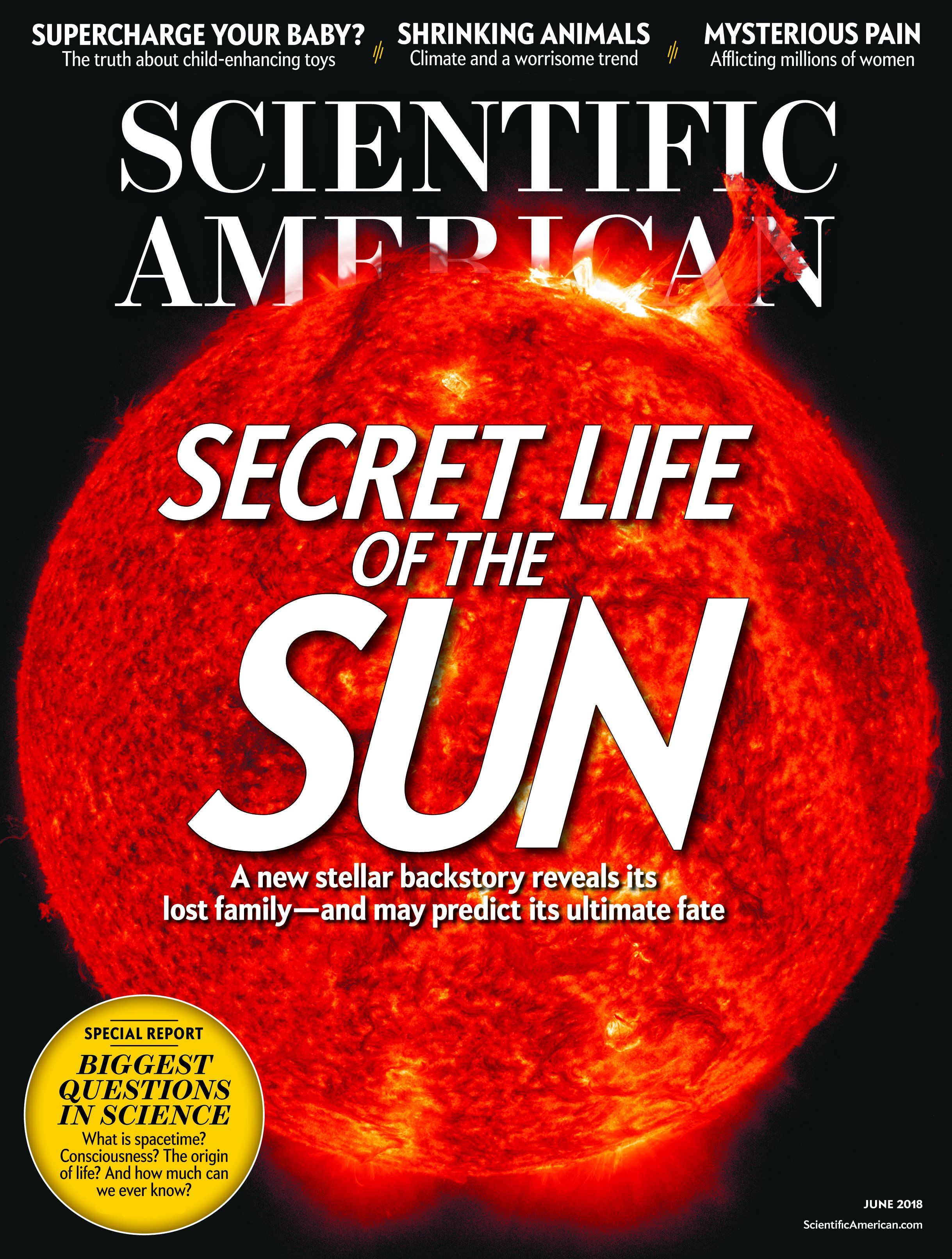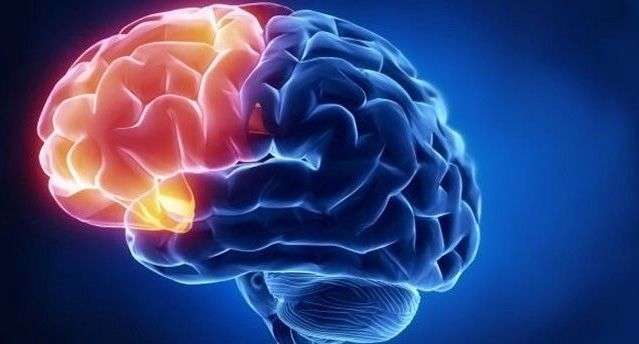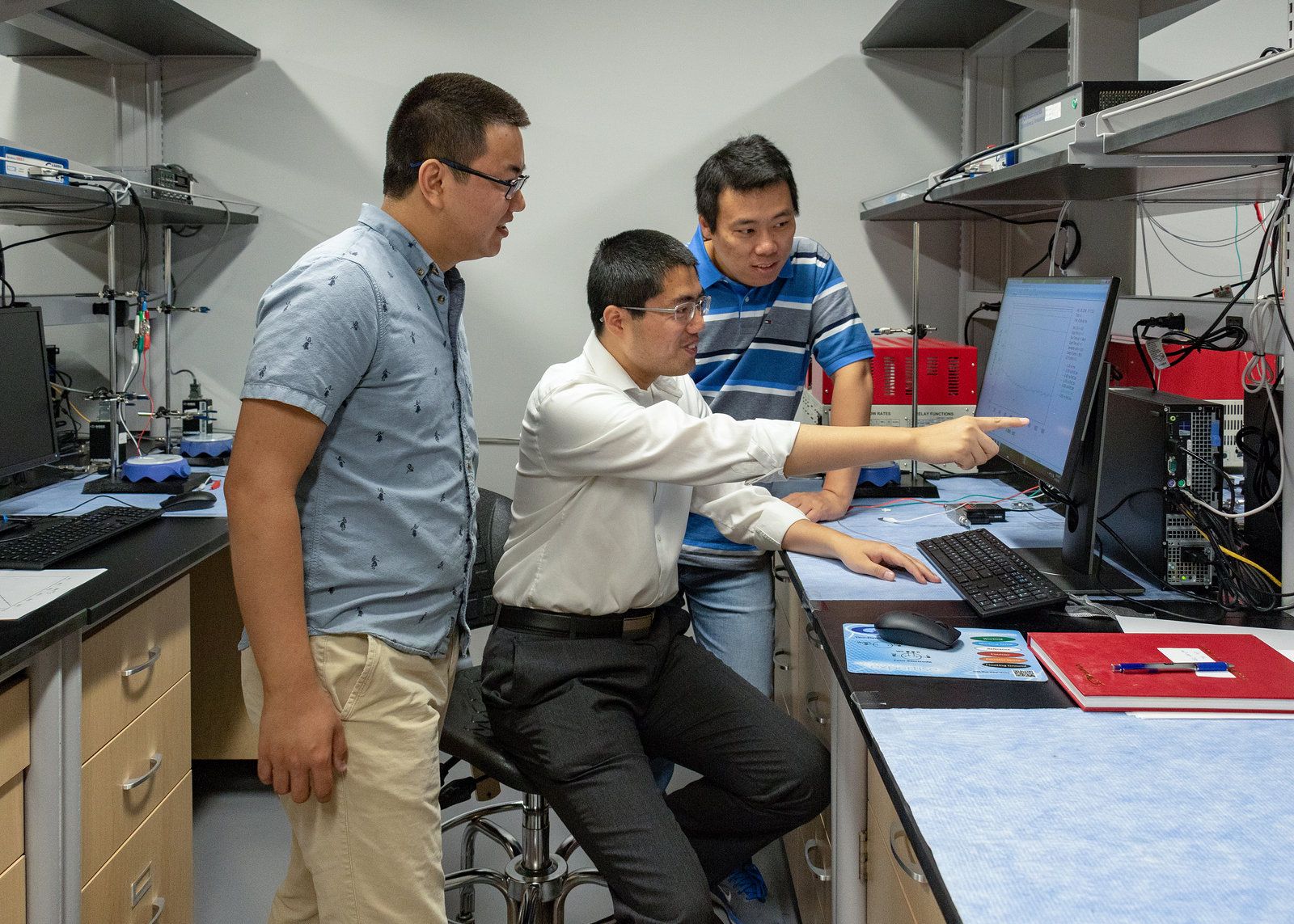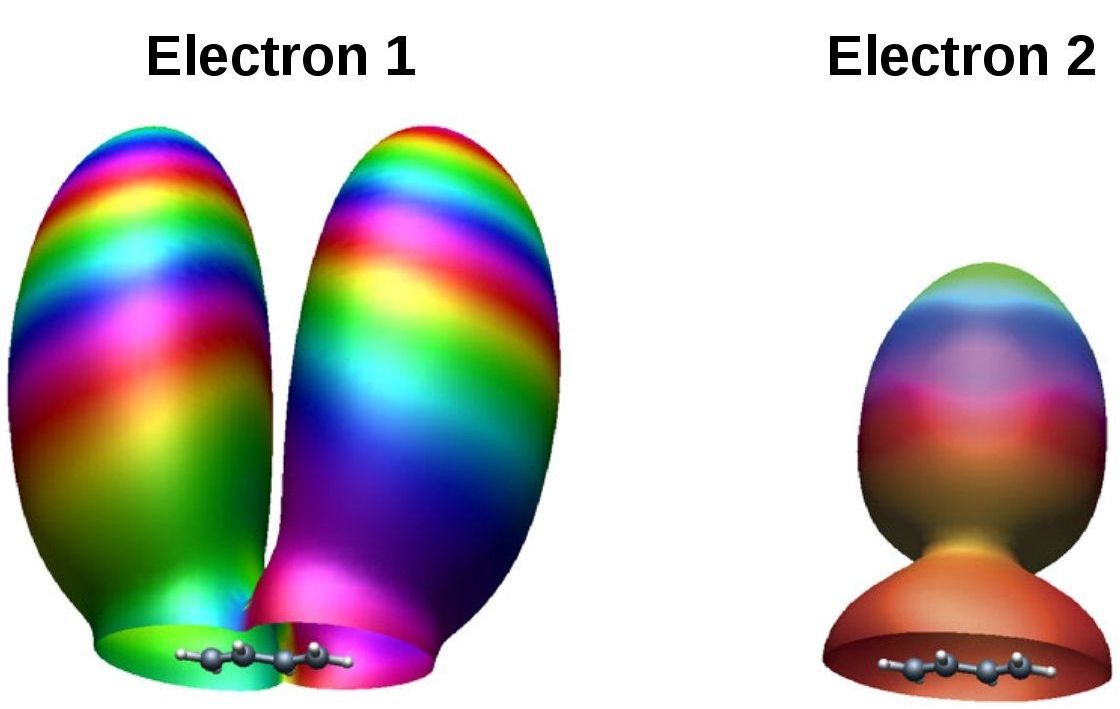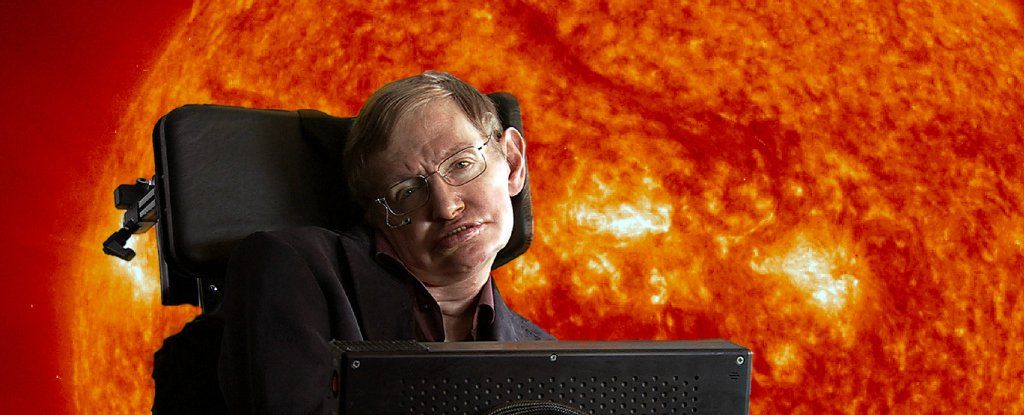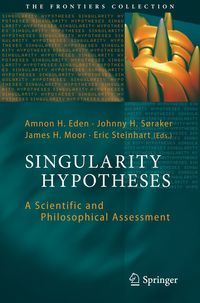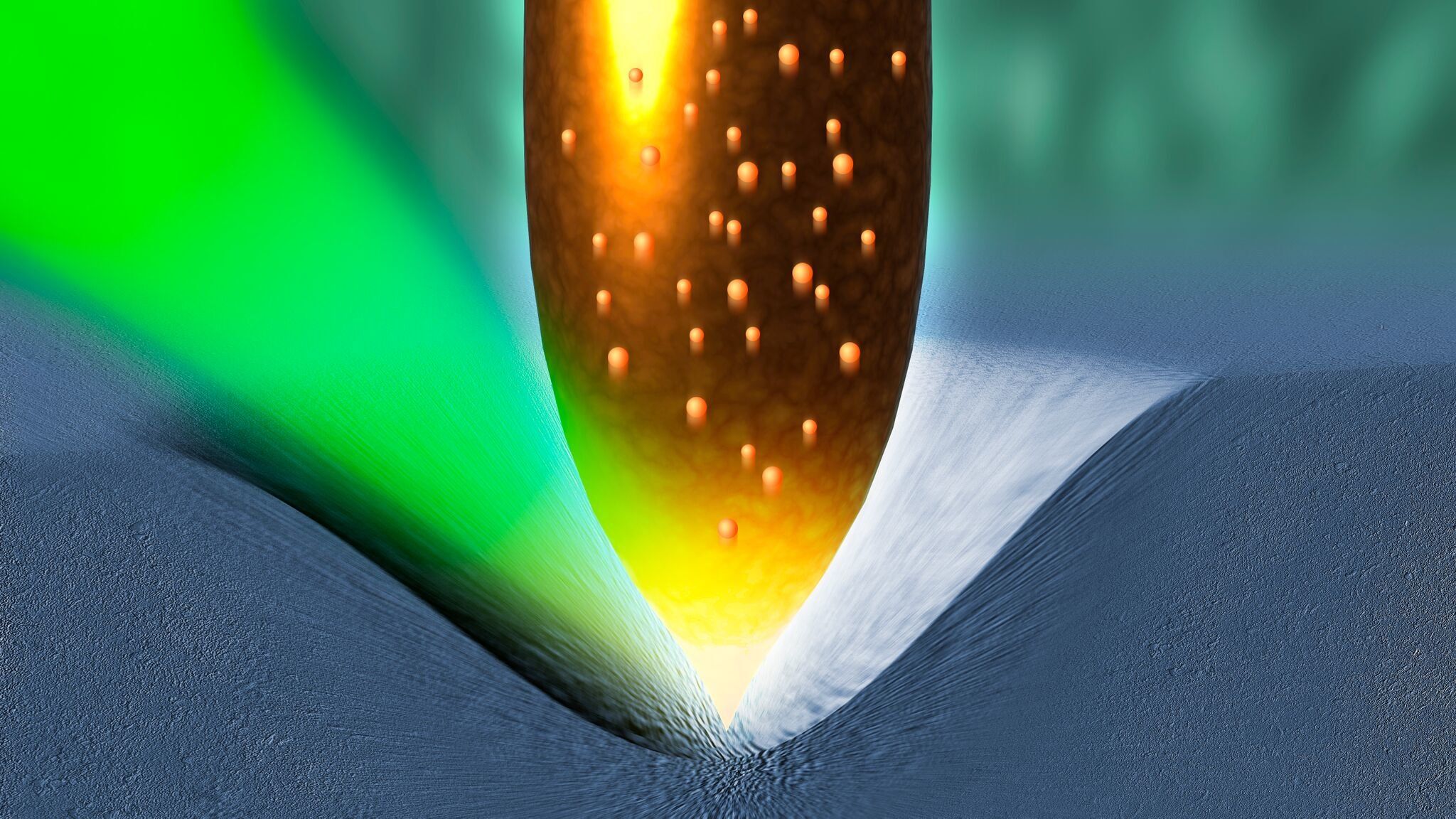Archive for the ‘physics’ category: Page 267
May 16, 2018
Machine Learning of Human Brain
Posted by Marcos Than Esponda in categories: information science, nanotechnology, physics, robotics/AI
Q) Why Algorithmic leaps can be better than Hardware leaps?
Ans) Hardware constraints create bottlenecks that are hard to tackle as uncertainty of physics at small scale (nano-meters and less) come into play (electrons start jumping around).
At this point, ideas (algorithms) can be used to unleash full potential of the feasible hardware.
May 16, 2018
A green approach to making ammonia could help feed the world
Posted by Bill Kemp in categories: energy, food, physics, sustainability
A UCF research team with collaborators at Virginia Tech have developed a new “green” approach to making ammonia that may help make feeding the rising world population more sustainable.
“This new approach can facilitate ammonia production using renewable energy, such as electricity generated from solar or wind,” said physics Assistant Professor Xiaofeng Feng. “Basically, this new approach can help advance a sustainable development of our human society.”
Ammonia, a compound of nitrogen and hydrogen, is essential to all life on the planet and is a vital ingredient in most fertilizers used for food production. Since World War I, the ammonia in fertilizer has been primarily produced using the Haber-Bosch method, which is energy and fossil-fuel intensive. There have been substantial obstacles to improving the process, until now.
May 14, 2018
What is the Singularity?
Posted by Derick Lee in categories: computing, internet, physics, singularity, transhumanism, virtual reality
Not everyone is convinced. Critics point out that one of the points of exponential growth is that it cannot carry on forever. After a 50-year run, Moore’s Law is stuttering. Singularitarians retort that the laws of physics define a limit to how much computation you can cram into a given amount of matter, and that humans are nowhere near that limit. Even if Moore’s Law slows, that merely postpones the great day rather than preventing it. Others say the Singularity is just reli…gion in new clothes, reheated millenarianism with transistors and Wi-Fi instead of beards and thunderbolts. (One early proponent of Singularitarian and transhumanist ideas was Nikolai Federov, a Russian philosopher born in 1829 who was interested in resurrecting the dead through scientific means rather than divine ones.) And those virtual-reality utopias do look an awful lot like heaven. Perhaps the best way to summarise the Singularity comes from the title of a book published in 2012: the Rapture of the Nerds.
And will it lead to the extermination of all humans?

May 12, 2018
Dozens of binaries from Milky Way’s globular clusters could be detectable
Posted by Genevieve Klien in categories: cosmology, physics
The historic first detection of gravitational waves from colliding black holes far outside our galaxy opened a new window to understanding the universe. A string of detections—four more binary black holes and a pair of neutron stars—soon followed the Sept. 14, 2015, observation.
Now, another detector is being built to crack this window wider open. This next-generation observatory, called LISA, is expected to be in space in 2034, and it will be sensitive to gravitational waves of a lower frequency than those detected by the Earth-bound Laser Interferometer Gravitational-Wave Observatory (LIGO).
A new Northwestern University study predicts dozens of binaries (pairs of orbiting compact objects) in the globular clusters of the Milky Way will be detectable by LISA (Laser Interferometer Space Antenna). These binary sources would contain all combinations of black hole, neutron star and white dwarf components. Binaries formed from these star-dense clusters will have many different features from those binaries that formed in isolation, far from other stars.
Continue reading “Dozens of binaries from Milky Way’s globular clusters could be detectable” »
May 8, 2018
Sun protection without blinds
Posted by Bill Kemp in categories: habitats, physics, solar power, sustainability
Summer. Blue sky. Sunshine. But you don’t notice much of it in the office or in your home, because the blinds block the view so that the heat stays outside. This scenario could soon be a thing of the past: EPFL researchers are working with Empa on a window glass that keeps out the heat in summer and at the same time allows a clear view of the outside world.
Depending on the season, windows must have a different function in order to provide sufficient comfort in offices and apartments. In summer they should keep heat away and prevent glare from the sun. In winter they should distribute the little light optimally in the room. A team led by Andreas Schüler from the Laboratory for Solar Energy and Building Physics at EPFL has recently developed a window that meets all these criteria. In cooperation with Empa researchers led by Patrik Hoffmann from the Laboratory for Advanced Materials Processing in Thun, work is currently underway on their manufacture—which could soon make sun blinds redundant. Seasonal window glass reduces summer overheating and glare in buildings and ensures high solar energy and daylight input in winter. All this without impairing the view outwards through dimming or blinds.
Jing Gong, a Ph.D. student at EPFL, used Empa’s highly complex laser system in Thun to produce a so-called master form with a microstructured surface with the precision laser. Micro mirrors are then evaporated into these micro-grooves and encapsulated in a polymer film. This film can then be easily inserted into a conventional double-glazed window. The arrangement of so-called “Compound Parabolic Concentrator” (CPC) lenses is used to optimally reflect sunlight with low restrictions in visibility. While the first prototypes have been developed in the laboratory, the researchers are already working on up-scaling. In a pilot project in cooperation with BASF Switzerland, the team is working on a manufacturing process that should make it possible to produce the window glass coating consisting of millions of micro mirrors with high precision, quickly and cost-effectively. This poses a major challenge due to the very high optical quality requirements.
May 4, 2018
Laser-driven electron recollision remembers molecular orbital structure
Posted by Saúl Morales Rodriguéz in category: physics
Scientists from the Max Born Institute for Nonlinear Optics and Short Pulse Spectroscopy (MBI) in Berlin combined state-of-the-art experiments and numerical simulations to test a fundamental assumption underlying strong-field physics. Their results refine our understanding of strong-field processes such as high harmonic generation (HHG) and laser-induced electron diffraction (LIED).
Strong infrared laser pulses can extract an electron from a molecule (ionization), accelerate it away into free space, then turn it around (propagation), and finally collide it with the molecule (recollision). This is the widely used three-step model of strong-field physics. In the recollision step, the electron may, for example, recombine with the parent ion, giving rise to high harmonic generation, or scatter elastically, giving rise to laser-induced electron diffraction.
One of the commonly used assumptions underlying attosecond physics is that, in the propagation step, the initial structure of the ionized electron is “washed out”, thus losing the information on the originating orbital. So far, this assumption was not experimentally verified in molecular systems.
Continue reading “Laser-driven electron recollision remembers molecular orbital structure” »
May 3, 2018
Stephen Hawking’s Final Theory About Our Universe Has Just Been Published, And It Will Melt Your Brain
Posted by Michael Lance in categories: cosmology, neuroscience, physics
Posthumous journal.
Groundbreaking physicist Stephen Hawking left us one last shimmering piece of brilliance before he died: his final paper, detailing his last theory on the origin of the Universe, co-authored with Thomas Hertog from KU Leuven.
The paper, published today in the Journal of High Energy Physics, puts forward that the Universe is far less complex than current multiverse theories suggest.
May 2, 2018
Singularity Hypotheses Analysis
Posted by Amnon H. Eden in categories: computing, neuroscience, physics, singularity, transhumanism
Publication numbers are in: 55 thousand downloads! 🎉😁🍾.
Singularity Hypotheses: A Scientific and Philosophical Assessment offers authoritative, jargon-free essays and critical commentaries on accelerating technological progress and the notion of technological singularity. It focuses on conjectures about the intelligence explosion, transhumanism, and whole brain emulation. Recent years have seen a plethora of forecasts about the profound, disruptive impact that is likely to result from further progress in these areas. Many commentators however doubt the scientific rigor of these forecasts, rejecting them as speculative and unfounded. We therefore invited prominent computer scientists, physicists, philosophers, biologists, economists and other thinkers to assess the singularity hypotheses. Their contributions go beyond speculation, providing deep insights into the main issues and a balanced picture of the debate.
Apr 20, 2018
New research could literally squeeze more power out of solar cells
Posted by Bill Kemp in categories: physics, solar power, sustainability
Physicists at the University of Warwick have today, Thursday 19th April 2018, published new research in the fournal Science today 19th April 2018 (via the Journal’s First Release pages) that could literally squeeze more power out of solar cells by physically deforming each of the crystals in the semiconductors used by photovoltaic cells.
The paper entitled the “Flexo-Photovoltaic Effect” was written by Professor Marin Alexe, Ming-Min Yang, and Dong Jik Kim who are all based in the University of Warwick’s Department of Physics.
The Warwick researchers looked at the physical constraints on the current design of most commercial solar cells which place an absolute limit on their efficiency. Most commercial solar cells are formed of two layers creating at their boundary a junction between two kinds of semiconductors, p-type with positive charge carriers (holes which can be filled by electrons) and n-type with negative charge carriers (electrons).
